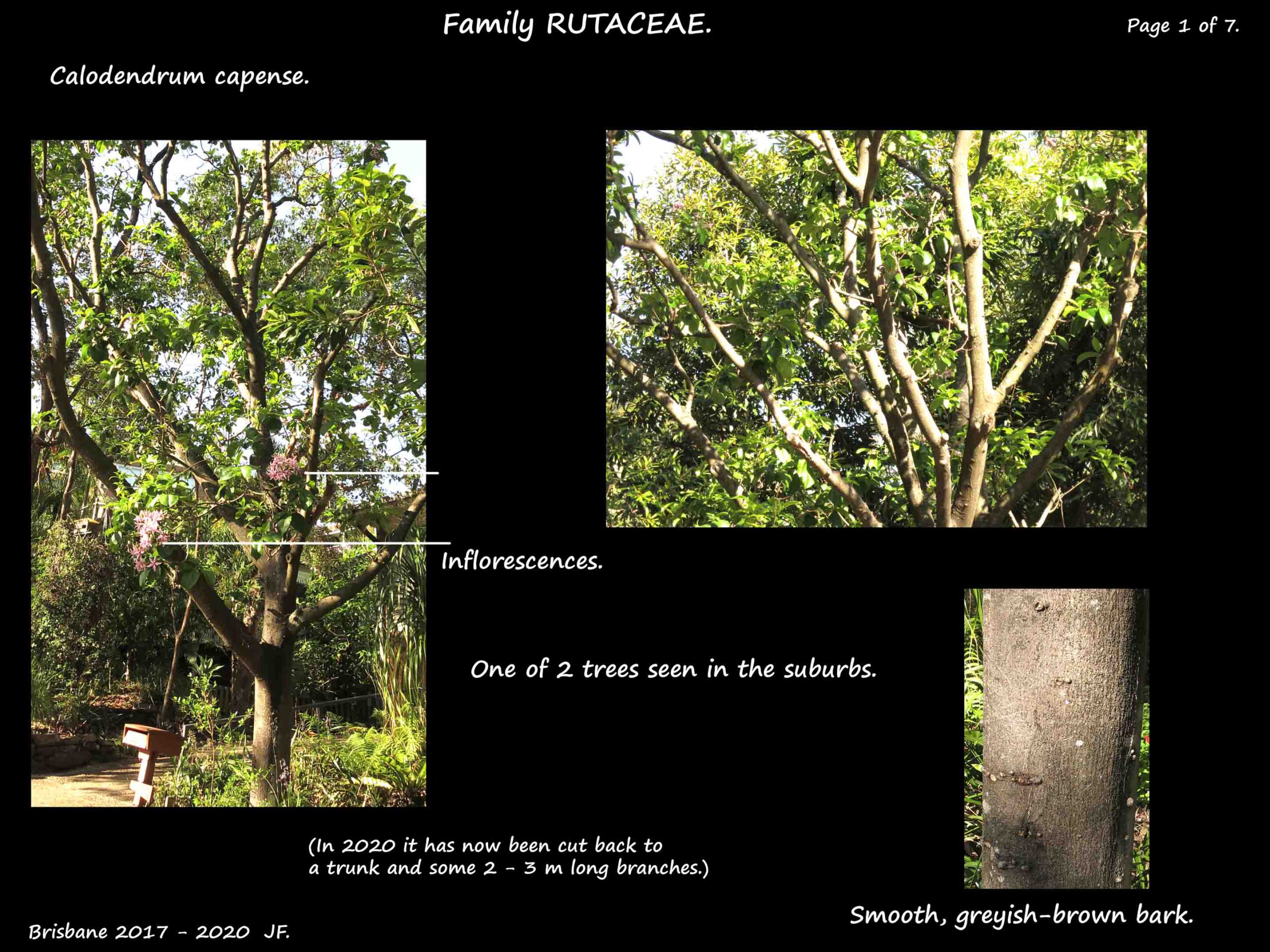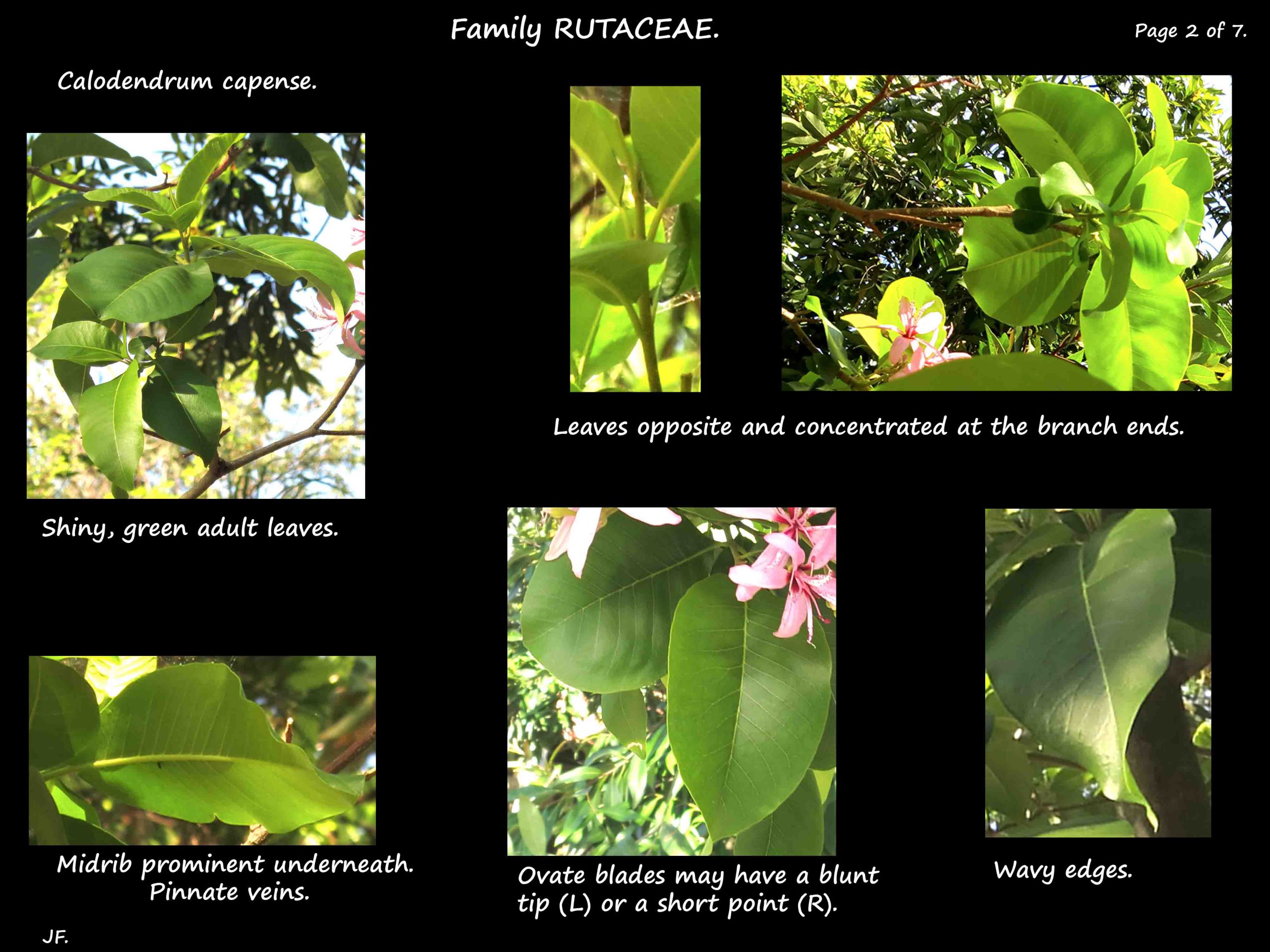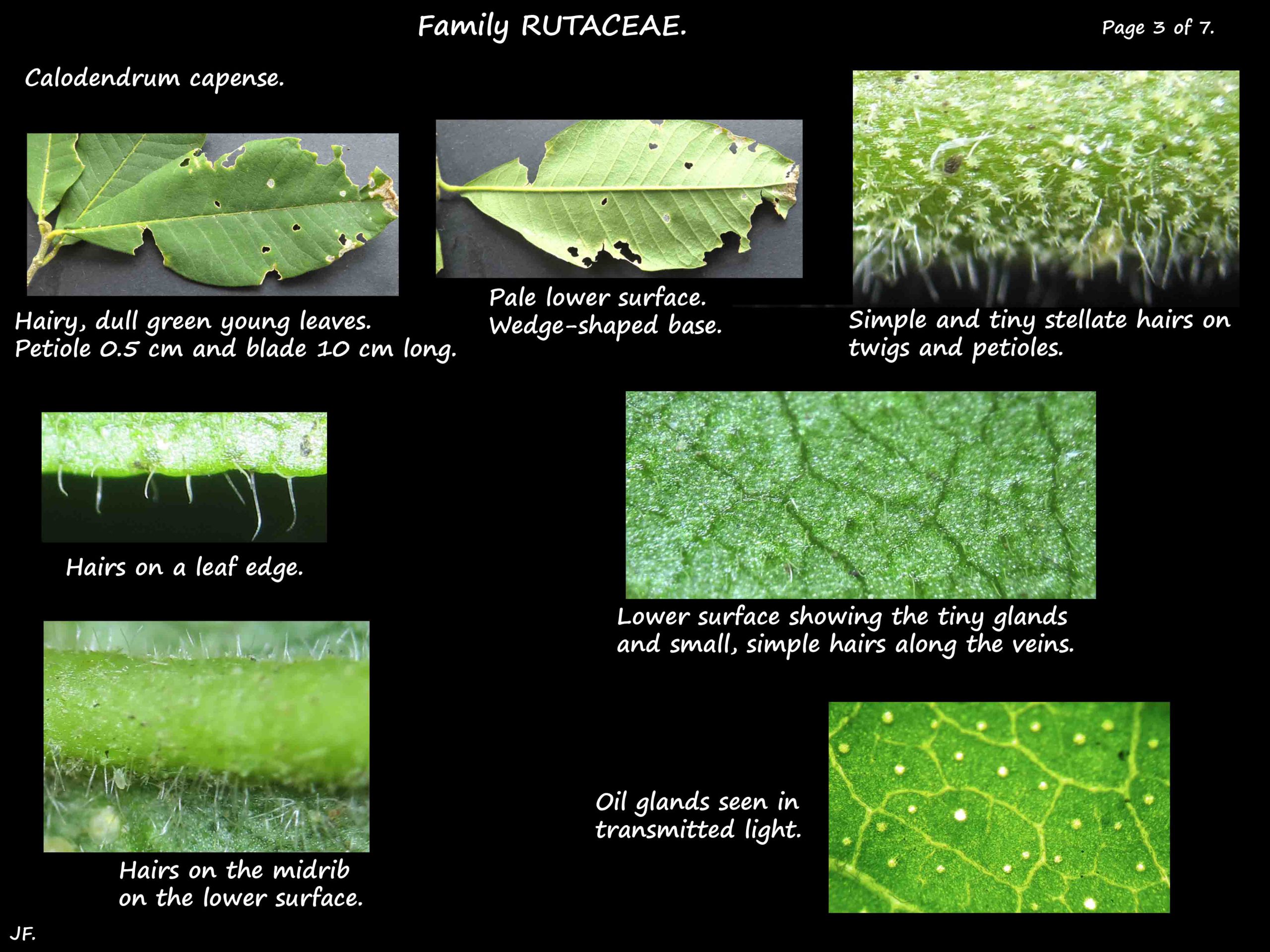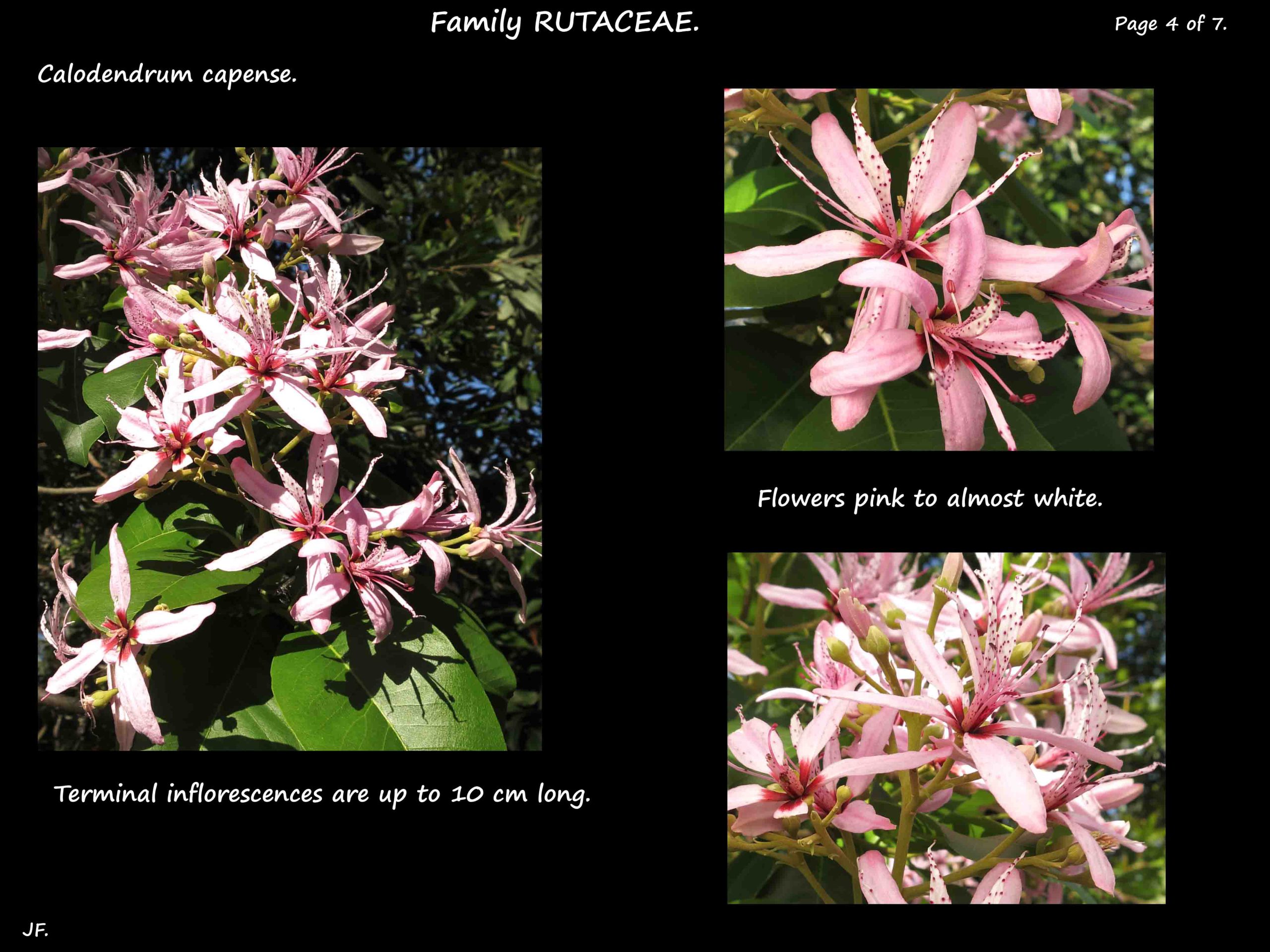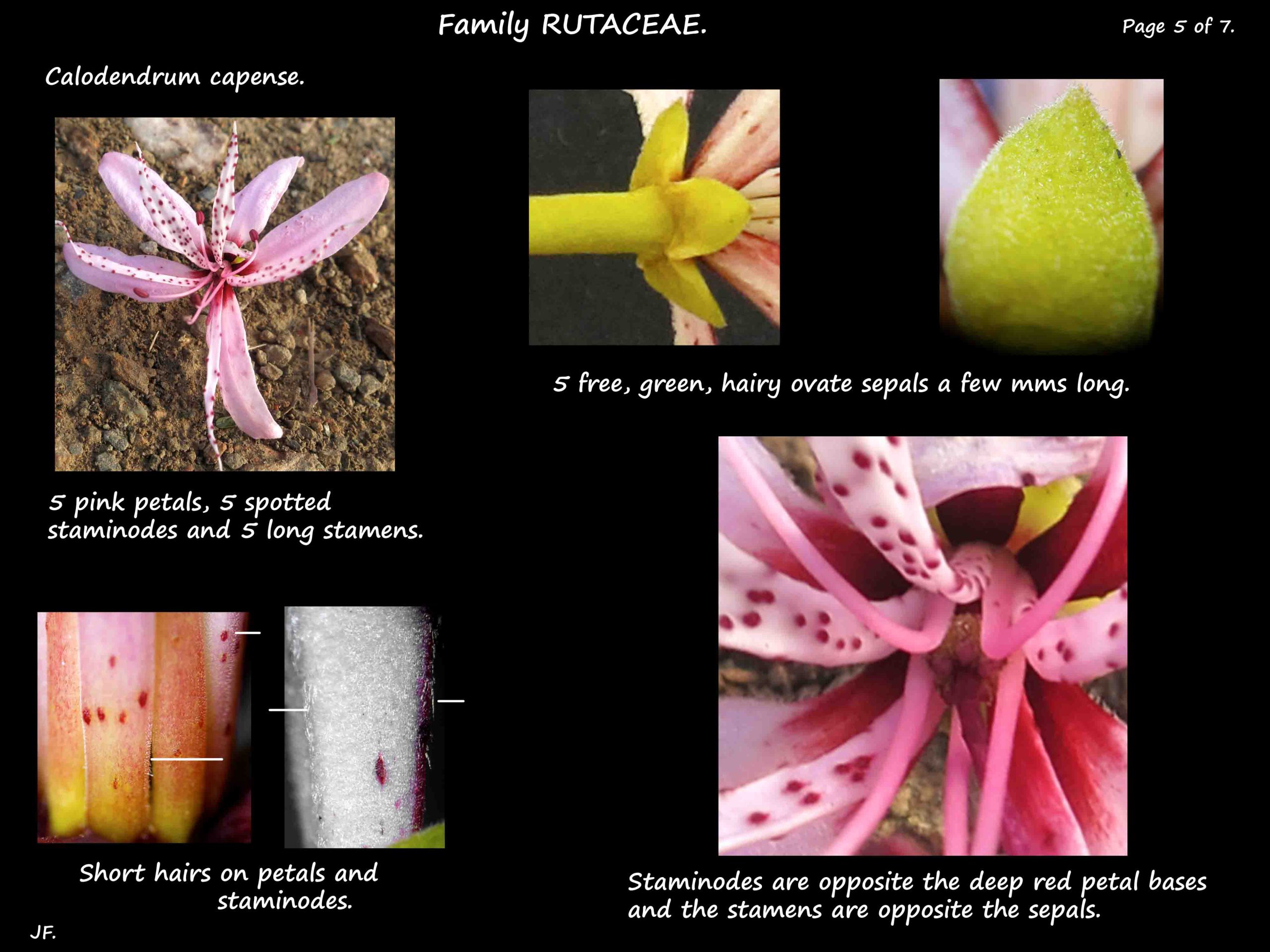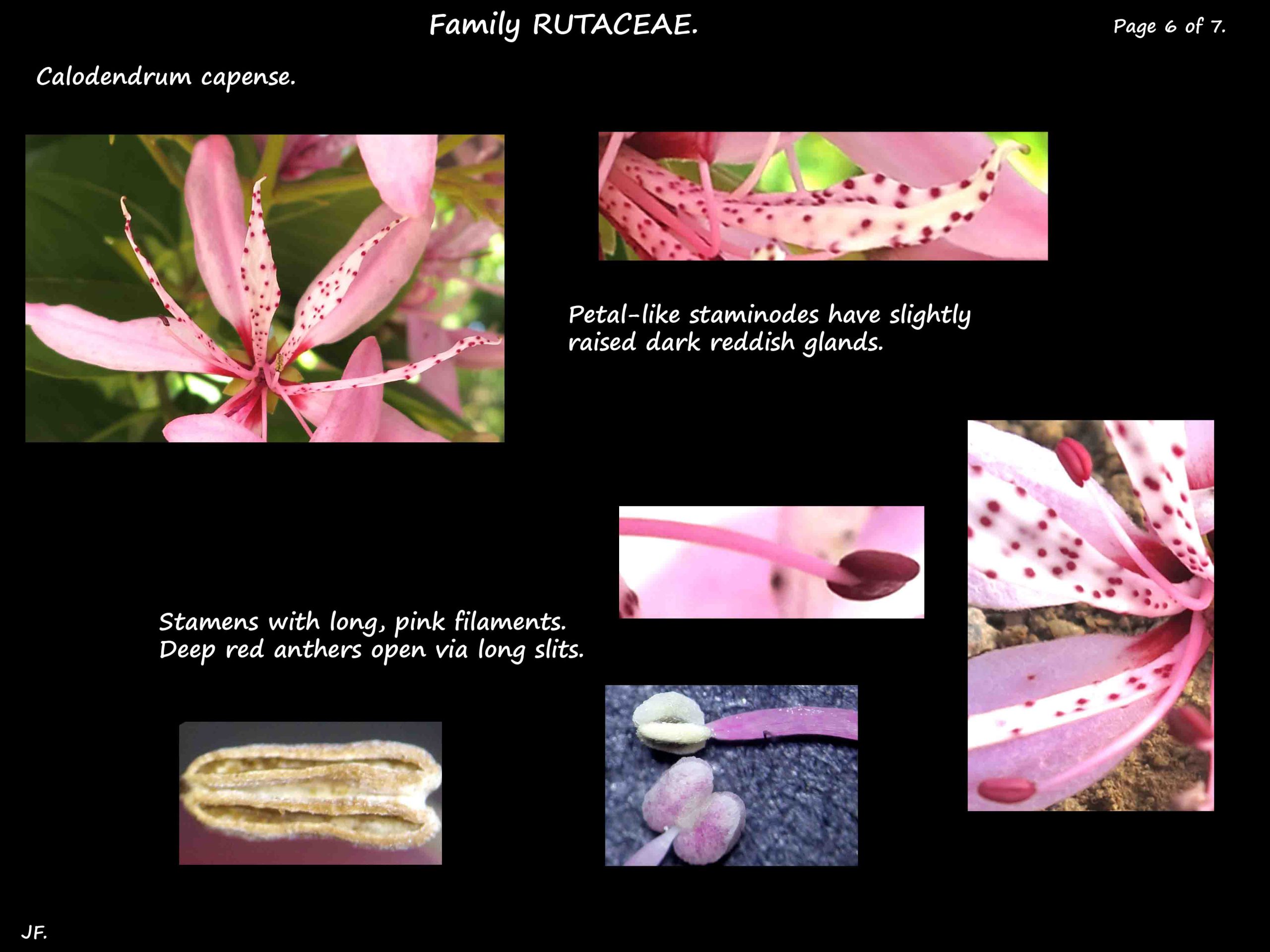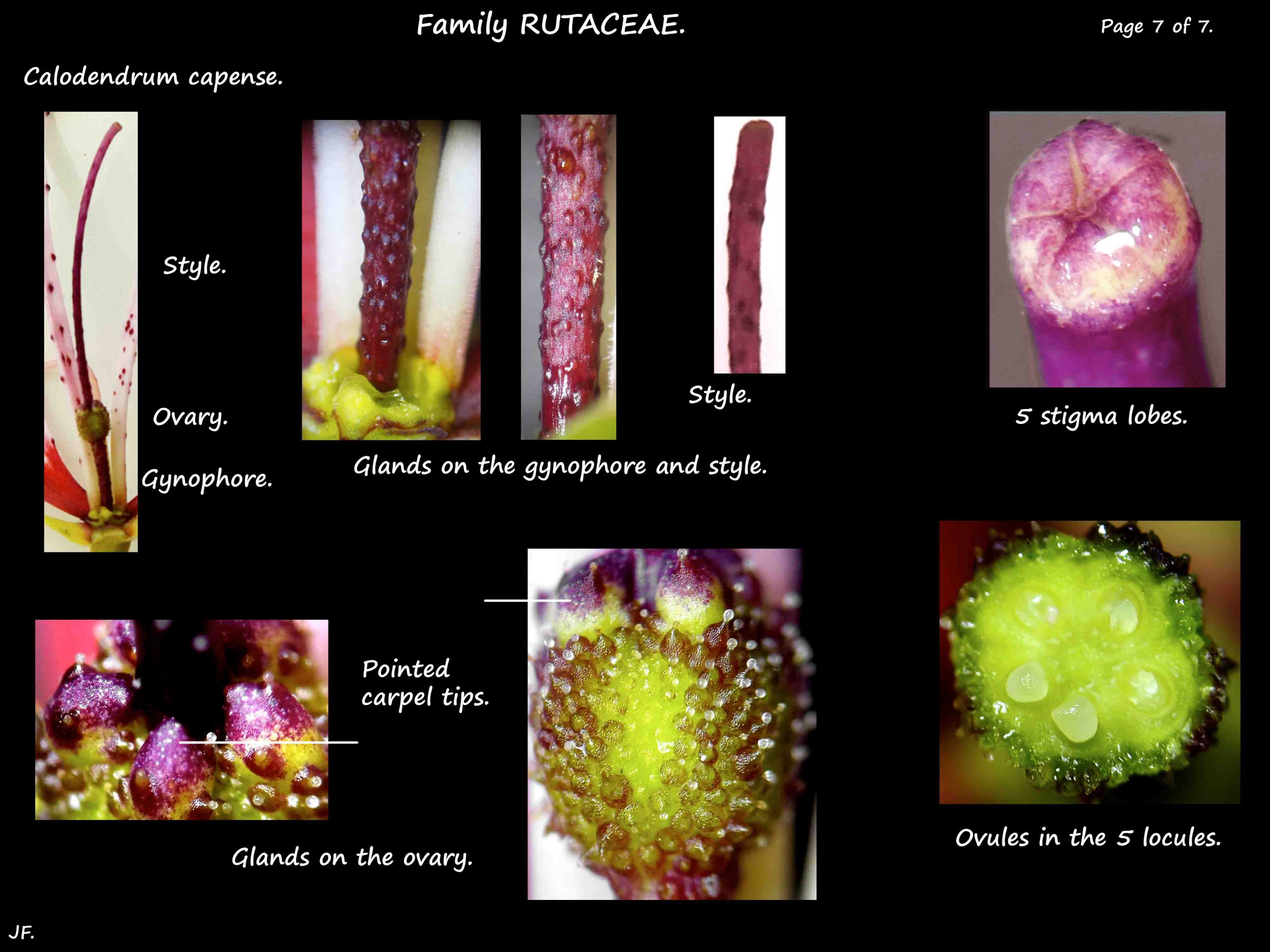Calodendrum capense.
The Cape Chestnut, in Family Rutaceae, is from Africa.
They are evergreen trees (in warm climates) mostly to 10 m but can be more.
They have a dense rounded crown.
The trunk has smooth, mottled, greyish bark.
There are dense hairs on the young branches, leaves and inflorescences.
These can be stellate or branched.
The leaves are opposite and up to 20 cm long by 10 cm wide.
The petiole is up to 1 cm long and there are no stipules.
The blades are ovate to elliptic with smooth edges that may be wavy.
The tips are rounded or slightly pointed and the base wedge-shaped.
The upper surface is a shiny green and the lower surface paler.
Young leaves have simple and stellate hairs on the stems and petioles.
The lower leaf surface has similar hairs and the upper surface a few.
Adult leaves loose the hairs.
The leaves have oil glands all over the blade.
These are seen as tiny nodules or, in transmitted light as translucent spots.
Crushed leaves have a citrus smell.
Terminal inflorescences, up to 15 cm long, can cover the upper part of the tree.
They are branched clusters of pale pink or white flowers.
The bisexual flowers are on stalks up to 2 cm long.
The bracteoles are only a few mms long.
The 5 free, green, outward curving sepals alternate with the 5 petals.
The ovate sepals are about 4 mm long with tiny hairs on both surfaces.
The 5 elliptic petals are pink or mauve, fading to white, and have a dark red base.
Up to 4.5 cm long by 1.5 cm wide, they are straight or curved backwards a little.
There are simple or branched hairs externally and simple ones inside.
There are 5 fertile stamens with long, pale pink styles.
The dark red anthers are 1.4 mm long.
They insert onto the annular disc.
The 5 infertile, petal-like staminodes are pale pink.
They have slightly raised, dark reddish-purple glands.
The gynoecium, of 5 fused carpels, is on a stalk or gynophore about 5 mm long.
The superior, globular ovary is 2 – 3 mm wide and has 5 locules each with 2 ovules.
The tops of each segment taper to a short point.
The surface is covered in large papillae (glands).
The single dark purple style is 15 to 20 mm long.
At the tip are the 5 fused stigma lobes.
The fruit are warty, woody brown septicidal capsules around 3.5 cm across.
The 5 segments separate from the base upwards.
The segments stay attached to the top of the central column.
Each chamber holds 2 smooth, shiny black seeds around 12 mm across.
J.F.
